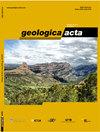瑞典硬石实验室晶体岩石中LTE-SD放射性核素扩散实验建模
IF 2
4区 地球科学
Q2 GEOLOGY
引用次数: 3
摘要
本研究对结晶岩中不同放射性核素示踪剂迁移和保留的现场实验建模结果进行了比较和分析。这项工作是在瑞典核燃料和废物管理公司(SKB)地下水流动和溶质输送建模工作队(GWFTS工作队)内进行的。GWFTS工作组的任务9B是任务9中的第二个子任务,重点是对长期吸附扩散实验原位示踪剂测试的实验结果进行建模。该测试是在约410米深的硬石实验室进行的。含有放射性核素示踪剂混合物的合成地下水在裂缝的自然表面和在未改变的岩石基质中钻出的狭窄小孔中循环198天。试验结束后对岩石进行过钻孔,可以测量破裂面(A岩芯)和细孔(D岩芯)岩石中的示踪剂分布剖面。岩石样品中测得的示踪剂活性显示,非或弱吸收示踪剂(Cl-36、Na-22)以及许多强吸收放射性核素的示踪剂活性都很长(几厘米)。对这一意外特征的理解是此次建模活动的主要动机之一。然而,在任务9B过程中对数据的重新评估和修订提供了证据,证明强吸收示踪剂低活性的异常长尾是由于岩石样品制备过程中的交叉污染造成的伪影。Cs-137、Ba-133、Ni-63和Cd-109的一些数据点仍然存在,但在距离示踪剂源较远(>10mm)的大多数测量值现在都低于报告的检测限值。10个不同的建模团队使用不同的概念和代码为本次演习提供了结果。最终考虑的示踪剂是Na-22、Cl-36、Co-57、Ni-63、Ba-133、Cs-137、Cd-109、Ra-226和Np-237。使用了三种主要类型的模型:i)输运-滞留方程的分析解,ii)连续多孔介质数值模型,以及iii)基于微观结构的模型,考虑小规模非均质性(即矿物颗粒、孔隙率和/或微裂缝分布)和潜在厘米级裂缝。不同团队的建模得出了一些重要结论,例如,在裂缝表面和细孔壁附近存在扰动带(厚度为几毫米),以及微裂缝和厘米级裂缝在弱吸收示踪剂传输中的作用。这些结论可以在对实验数据(岩石中的示踪剂剖面)进行重新评估和修订,并对不同团队提供的不同模型结果进行分析后得出。本文章由计算机程序翻译,如有差异,请以英文原文为准。
Modelling of the LTDE-SD radionuclide diffusion experiment in crystalline rock at the Äspö Hard Rock Laboratory (Sweden)
This study shows a comparison and analysis of results from a modelling exercise concerning a field experiment involving the transport and retention of different radionuclide tracers in crystalline rock. This exercise was performed within the Swedish Nuclear Fuel and Waste Management Company (SKB) Task Force on Modelling of Groundwater Flow and Transport of Solutes (Task Force GWFTS).Task 9B of the Task Force GWFTS was the second subtask within Task 9 and focused on the modelling of experimental results from the Long Term Sorption Diffusion Experiment in situ tracer test. The test had been performed at a depth of about 410m in the Äspö Hard Rock Laboratory. Synthetic groundwater containing a cocktail of radionuclide tracers was circulated for 198 days on the natural surface of a fracture and in a narrow slim hole drilled in unaltered rock matrix. Overcoring of the rock after the end of the test allowed for the measurement of tracer distribution profiles in the rock from the fracture surface (A cores) and also from the slim hole (D cores). The measured tracer activities in the rock samples showed long profiles (several cm) for non- or weakly-sorbing tracers (Cl-36, Na-22), but also for many of the more strongly-sorbing radionuclides. The understanding of this unexpected feature was one of the main motivations for this modelling exercise. However, re-evaluation and revision of the data during the course of Task 9B provided evidence that the anomalous long tails at low activities for strongly sorbing tracers were artefacts due to cross-contamination during rock sample preparation. A few data points remained for Cs-137, Ba-133, Ni-63 and Cd-109, but most measurements at long distances from the tracer source (>10mm) were now below the reported detection limits.Ten different modelling teams provided results for this exercise, using different concepts and codes. The tracers that were finally considered were Na-22, Cl-36, Co-57, Ni-63, Ba-133, Cs-137, Cd-109, Ra-226 and Np-237. Three main types of models were used: i) analytical solutions to the transport-retention equations, ii) continuum-porous-medium numerical models, and iii) microstructure-based models accounting for small-scale heterogeneity (i.e. mineral grains, porosities and/or microfracture distributions) and potential centimetre-scale fractures. The modelling by the different teams led to some important conclusions, concerning for instance the presence of a disturbed zone (a few mm in thickness) next to the fracture surface and to the wall of the slim hole and the role of micro-fractures and cm-scale fractures in the transport of weakly sorbing tracers. These conclusions could be reached after the re-evaluation and revision of the experimental data (tracer profiles in the rock) and the analysis of the different sets of model results provided by the different teams.
求助全文
通过发布文献求助,成功后即可免费获取论文全文。
去求助
来源期刊

Geologica Acta
地学-地质学
CiteScore
2.50
自引率
6.70%
发文量
13
审稿时长
>12 weeks
期刊介绍:
- Relevant conceptual developments in any area of the Earth Sciences.
- Studies presenting regional synthesis.
- Thematic issues or monographic volumes presenting the results from one or more research groups.
- Short papers reflecting interesting results or works in progress.
- Contributions and results from Research Projects, Workshops, Symposiums, Congresses and any relevant scientific activity related to Earth Sciences.
- Geologica Acta aims to stimulate rapid diffusion of results and efficient exchange of ideas between the widespread communities of Earth Science researchers (with special emphasis on Latinamerica, the Caribbean, Europe, the Mediterranean
 求助内容:
求助内容: 应助结果提醒方式:
应助结果提醒方式:


